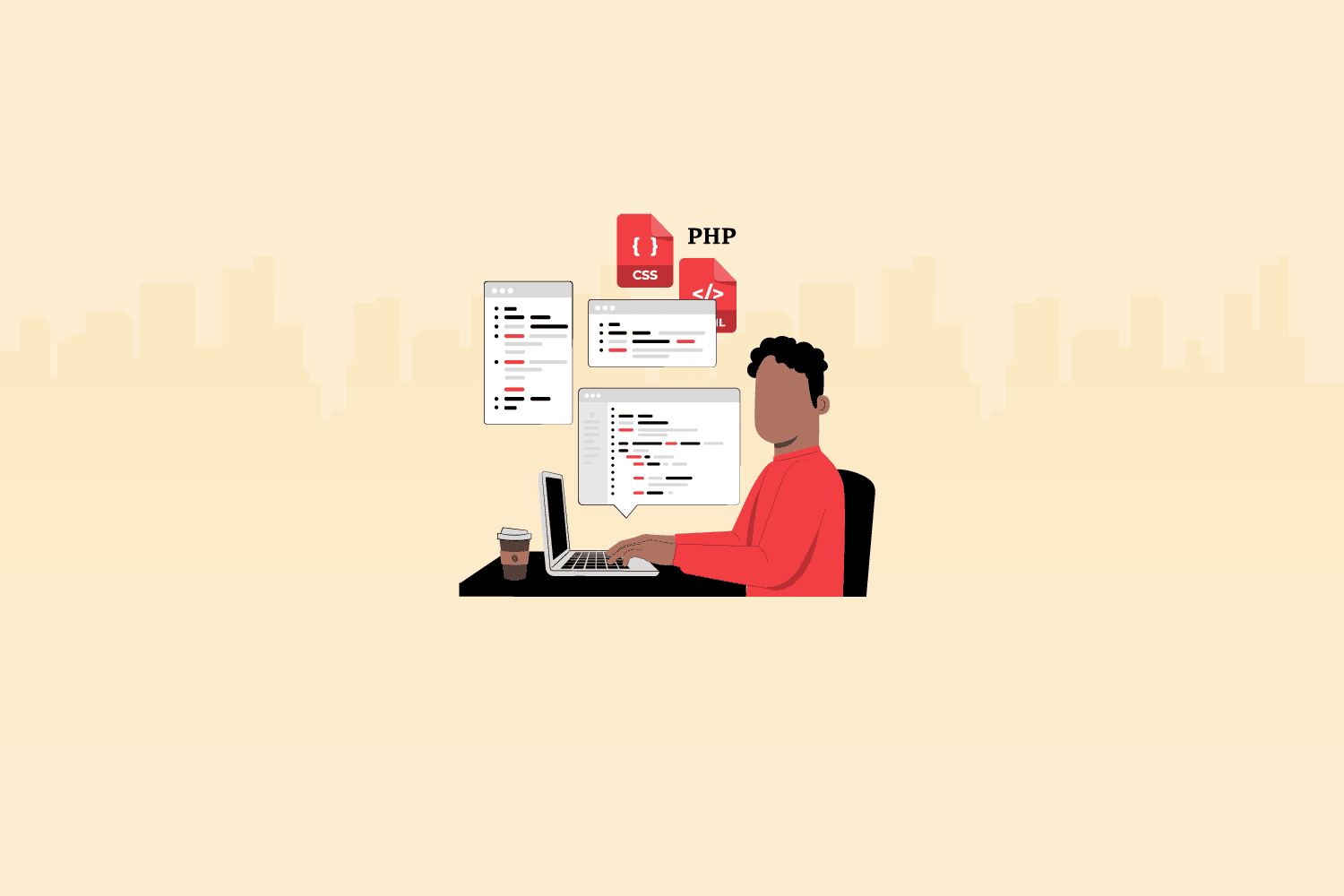Hiring the right graphic designer for your team is a crucial task that requires careful evaluation of their skills and abilities. Among the key aspects to consider are the candidate’s basic graphic design skills. These skills are essential as they enable designers to effectively communicate visually, create compelling designs, and contribute to the overall aesthetic and branding of your organization. Evaluating these skills during the hiring process not only ensures that you find the best fit for the relevant roles but also increases the likelihood of hiring a candidate who can meet your design needs and contribute to your organization’s visual identity.
In this blog, we will explore five valuable tips for evaluating basic graphic design skills while hiring. We will delve into methods such as portfolio assessment, design tasks or tests, assessing technical proficiency, evaluating attention to detail, and considering creativity and problem-solving abilities. By implementing these tips, you can effectively assess a candidate’s competence, creativity, attention to detail, and suitability for the graphic design role you are hiring for. These evaluation methods provide valuable insights into a candidate’s abilities and help you find the best fit for your team.
5 tips to evaluate graphic designing skills
When it comes to hiring for graphic design roles, evaluating basic graphic design skills is crucial to finding the best fit for your team. These skills play a vital role in ensuring that the hired candidate can effectively communicate visually, create compelling designs, and contribute to the overall aesthetic and branding of your organization.
Basic graphic design skills encompass a range of abilities, including a strong understanding of design principles, proficiency in industry-standard software such as Adobe Creative Suite, and knowledge of typography, color theory, and layout composition. These skills enable designers to create visually appealing and impactful designs that resonate with your target audience.
Evaluating these skills during the hiring process allows you to assess a candidate’s competence and creativity in executing design projects. Requesting a portfolio review or design task can provide insight into their ability to translate concepts into visually appealing designs, showcase their attention to detail, and highlight their creativity and problem-solving skills.
By assessing basic graphic design skills, you increase the likelihood of finding candidates who can contribute to your organization’s visual identity and meet your design needs. Additionally, skilled designers can efficiently collaborate with other team members, deliver projects within deadlines, and adapt to evolving design trends and technologies.
Ultimately, evaluating basic graphic design skills during the hiring process allows you to identify candidates who possess the necessary expertise and artistic sensibility to create visually captivating designs that align with your organization’s goals and values.
Portfolio assessment
When evaluating graphic design skills, one of the most effective methods is conducting a thorough portfolio assessment. A portfolio showcases a designer’s body of work and provides valuable insights into their skills, style, and experience. Here are some key considerations when assessing a graphic design portfolio:
- Diversity of Projects: Examine the range of projects in the portfolio to determine if the designer has experience across various design mediums, such as print, digital, branding, or illustration. Look for versatility and the ability to adapt to different design requirements.
- Quality of Work: Assess the overall quality of the designs presented. Look for well-executed compositions, attention to detail, and an understanding of design principles. Evaluate the use of color, typography, and imagery to determine the designer’s aesthetic sensibility.
- Relevance to Your Needs: Consider whether the portfolio includes projects that align with your industry or the specific design needs of your organization. Look for examples that demonstrate an understanding of your target audience and brand identity.
- Project Descriptions: Pay attention to how the designer presents their projects. Do they provide insightful descriptions that explain the objectives, challenges, and solutions? A designer who can articulate their design process demonstrates professionalism and effective communication skills.
- Client Feedback and Impact: If available, review any client testimonials or feedback regarding the designer’s work. Positive client experiences and the impact of the designer’s work can provide valuable insights into their ability to meet client expectations and deliver successful design solutions.
A comprehensive assessment of a graphic design portfolio can help you gauge a designer’s skills, creativity, and suitability for the role. Combining portfolio assessment with other evaluation methods can provide a well-rounded understanding of a candidate’s graphic design abilities.
Graphic designing task or test
In addition to portfolio assessment, incorporating a design task or test into the evaluation process can provide valuable insights into a candidate’s practical graphic design skills. Here are some considerations when implementing a design task or test:
- Clear Objective: Define a clear objective for the design task or test that aligns with the skills and responsibilities required for the role. It could be creating a logo, designing a website mockup, or developing a marketing collateral. A well-defined objective helps assess a candidate’s ability to understand and execute specific design requirements.
- Time Limit: Set a realistic time limit for completing the design task or test. This allows you to evaluate the candidate’s ability to work efficiently and deliver quality work within deadlines, mirroring real-world project scenarios.
- Evaluation Criteria: Establish specific evaluation criteria to assess the design submissions. Consider factors such as creativity, technical proficiency, adherence to brand guidelines, attention to detail, and problem-solving abilities. Clear evaluation criteria enable consistent and objective assessment of the candidates’ work.
- Communication and Collaboration: If applicable to the role, consider incorporating a collaborative element into the design task. This can involve working with a hypothetical client, presenting design concepts, or seeking feedback from team members. It helps evaluate the candidate’s communication skills, collaboration abilities, and their capacity to incorporate feedback.
- Flexibility and Adaptability: Include a component that tests the candidate’s ability to adapt to different design styles, mediums, or client preferences. This demonstrates their versatility and willingness to explore different creative approaches.
Implementing a design task or test alongside other evaluation methods provides an opportunity to assess a candidate’s practical skills, problem-solving abilities, and their approach to meeting specific design requirements. It allows you to observe their creative process and evaluate their suitability for the graphic design role you are hiring for.
Technical proficiency
When evaluating graphic design skills, it’s essential to assess a candidate’s technical proficiency to ensure they possess the necessary skills to effectively utilize design software and tools. Here are some key considerations for evaluating technical proficiency:
- Software Knowledge: Evaluate the candidate’s familiarity and proficiency with industry-standard design software such as Adobe Creative Suite (including Photoshop, Illustrator, and InDesign). Assess their ability to navigate the software, use essential tools and features, and execute design tasks efficiently.
- File Management and Organization: Examine the candidate’s file management practices. Look for evidence of well-structured and organized design files, including properly named layers, folders, and project versions. A designer who demonstrates disciplined file management can work efficiently and collaborate effectively with team members.
- Typography and Layout Skills: Assess the candidate’s understanding of typography principles, including font selection, hierarchy, and readability. Look for their ability to create well-composed layouts, utilize grids effectively, and maintain consistency throughout designs.
- Image Editing and Manipulation: Evaluate the candidate’s proficiency in image editing and manipulation. Look for their ability to retouch images, adjust color and tone, and combine multiple elements seamlessly. Attention to detail and a keen eye for visual aesthetics are crucial in this aspect.
- Web Design and Interaction: If the role requires web design skills, assess the candidate’s proficiency in web design tools, HTML, CSS, and knowledge of responsive design principles. Evaluate their ability to create visually engaging and user-friendly web interfaces.
Evaluating technical proficiency ensures that the candidate has the necessary skills to work efficiently and produce high-quality designs using industry-standard software and tools. It helps identify individuals who can effectively utilize technology to execute design projects and contribute to the organization’s creative endeavors.
Attention to detail
Attention to detail is a critical aspect of graphic design, and evaluating a candidate’s ability to demonstrate meticulousness and precision is essential. Here are key considerations for assessing attention to detail:
- Typography Accuracy: Evaluate how the candidate handles typography, including the correct use of fonts, consistent spacing, and alignment. Look for attention to detail in kerning, leading, and tracking to ensure the text is visually balanced and legible.
- Color Consistency: Assess the candidate’s ability to maintain color consistency throughout their designs. Look for accurate color reproduction, adherence to brand guidelines, and the ability to create harmonious color palettes that enhance the overall aesthetic.
- Pixel Perfection: Evaluate the candidate’s ability to create designs with clean lines, sharp edges, and precise shapes. Look for their attention to detail in aligning elements, creating symmetrical compositions, and ensuring pixel-perfect accuracy.
- Proofreading and Error Identification: Assess the candidate’s aptitude for proofreading and identifying errors. Look for their ability to catch typos, grammatical mistakes, or design inconsistencies. A keen eye for detail in reviewing and refining designs is crucial.
- Consistent Design Language: Evaluate whether the candidate maintains a consistent design language throughout their portfolio or sample work. Look for visual coherence in terms of style, theme, and overall aesthetic. Consistency indicates attention to detail and an understanding of visual branding.
By assessing attention to detail, you can ensure that the candidate has the precision and meticulousness required for creating high-quality designs. Attention to typography, color accuracy, pixel-perfect execution, error identification, and consistency all contribute to a designer’s ability to deliver polished and professional work that meets the highest standards.
Creativity and problem-solving abilities
Evaluating a candidate’s creativity and problem-solving abilities is crucial when assessing graphic design skills. These qualities enable designers to think outside the box, generate innovative ideas, and tackle design challenges effectively. Here are key considerations for evaluating creativity and problem-solving abilities:
- Originality and Innovation: Assess the candidate’s portfolio for original and innovative design concepts. Look for unique approaches, fresh perspectives, and creative solutions that demonstrate the candidate’s ability to think creatively and bring a unique flair to their work.
- Conceptual Thinking: Evaluate the candidate’s ability to conceptualize and develop design ideas. Look for evidence of their thought process, how they translate concepts into visual representations, and their ability to communicate ideas effectively through design.
- Adaptability and Flexibility: Assess the candidate’s adaptability and flexibility in responding to design briefs or challenges. Look for their ability to adjust their creative approach, incorporate feedback, and find alternative solutions when faced with constraints or revisions.
- Problem-Solving Skills: Evaluate the candidate’s problem-solving abilities by reviewing their design process and solutions for complex design challenges. Look for their ability to analyze problems, identify key issues, and develop effective design solutions that meet the project objectives.
- Out-of-the-Box Thinking: Look for evidence of the candidate’s ability to think outside the box and push creative boundaries. Assess their willingness to explore unconventional design ideas, experiment with new techniques, and take risks in their design approach.
Assessing a candidate’s creativity and problem-solving abilities ensures that they have the capacity to generate innovative designs, overcome design obstacles, and contribute fresh perspectives to your organization. These qualities are crucial for designers to deliver visually captivating and effective solutions that resonate with the target audience and meet the design goals of your organization.
Conclusion
By incorporating these evaluation tips into your hiring process, you increase the chances of finding a candidate who possesses the necessary graphic design skills, creativity, and attention to detail to contribute to your organization’s visual identity and meet your design requirements. Finding the right graphic designer who fits well within your team can elevate your organization’s branding and ensure the delivery of visually captivating designs that resonate with your audience.
Testlify offers a range of assessments and challenges that allow you to gauge candidates’ knowledge, problem-solving skills, and creativity in real-world scenarios. With Testlify, you can administer real-world challenges that simulate the actual assessment process, giving candidates the opportunity to showcase their skills and approach to graphic designing. The platform provides a structured and standardized assessment process, allowing you to compare candidates objectively and make informed decisions. By incorporating Testlify into your hiring process, you can ensure a more comprehensive and reliable evaluation of candidates’ graphic designing skills, ultimately helping you identify the most qualified individuals for your team.
With our extensive test library, you can objectively evaluate candidates’ abilities, ensuring you shortlist the most talented individuals efficiently. Ready to unlock the potential of your hiring process? Book a free 30-minute live demo with Testlify. Our expert team will guide you through the platform, showcasing relevant skill tests tailored to your organization’s needs. With our support, you can streamline candidate selection, saving valuable time and resources.








